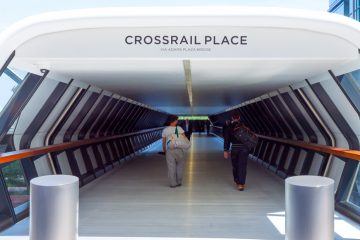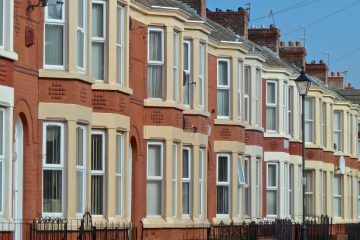Property investment manager JLL has outlined the bright future ahead for the west London hotspots that are set to benefit from the Crossrail effect.
The opening of the Elizabeth Line (Crossrail) and likely green light for a third runway at Heathrow Airport will bring important regeneration to west London hotspots, including: Acton, Kew, Brentford, Southall, Hayes and Harlington, and out towards Hillingdon and Uxbridge.
The report shows that 13,000 new homes are in the pipeline for this corridor of the capital. It is also forecast that west London hotspots are set to outperform both Greater London and central London in terms of property sales prices and rent price growth over the next five years.
This will be largely due to the Crossrail effect, it believes, with the greater connectivity between west and central London broadening the appeal of many west London hotspots.

The West London Hotspots that will Benefit from the Crossrail Effect
JLL has looked at the individual locations to watch out for as an investor:
Acton
Over the last few years, Acton has been abuzz with activity, with 1,425 homes completed since 2014. There are also over 2,135 units in the pipeline, amongst them, a 15-year regeneration transformation programme, which will see the redevelopment of a council estate into a new mixed-use residential hub.
The largest scheme in the area is Acton Gardens, which will deliver 1,250 private homes across 11 phases. Completed elements have mostly attracted young professionals, which has transformed the demographic of the area.
In addition to homes for sale, there is a pipeline of build to rent units under construction, including Oaks Shopping Centre and The Perfume Factory, offering accommodation starting from £1,150 per month.
Brentford and Kew Bridge
Over the past five years, the area has seen the completion of 1,680 homes, with a further 2,590 in the pipeline.
The largest scheme is Barratt London’s Great West Quarter, with 428 homes, which is part of a large regeneration project, including a new hotel, and retail and restaurant facilities. The average price per square foot is between £650-£700, with rent prices starting at £1,425 for a one-bedroom apartment.
Ealing, West Ealing and Hanwell
Since 2014, there have been 890 completions, with Dickens Yard being the biggest in the area (512 units to date).
There are just 63 homes under construction – the lowest of all west London hotspots – but the pipeline is strong, at 1,210 units. The average price per square foot starts at £550, while one-bed apartments begin at £1,200 per month.
Hayes and Harlington, and Southall

JLL has Looked at the Individual Locations to Watch Out for as an Investor
Sitting northeast of the airport, Heathrow is the main employer of the area’s residents. With the introduction of the Elizabeth Line, the area will be unlocked, providing easy access to London – a game changer that will attract a more diverse demographic to this location.
There have been 775 completions, of which more than two-thirds have been build to rent. The Old Vinyl Factory is the key residential development in Hayes and Harlington, rich in history as the former headquarters of EMI. Once finished, the mixed-use scheme will deliver 442 private units, 307 of which will be build to rent.
The planning pipeline here is by far the most extensive of west London hotspots, with 5,584 units.
The Berkeley Group has purchased the former Southall Gasworks site as one of the largest regeneration schemes in London, now known as Southall Waterside. The development is set to deliver 2,433 private units. New build pricing will start at £575 per square foot, with one-bed apartments going from £1,150 a month.
West Drayton and Drayton Gardens
Sitting on the outskirts of London, this will be the first western stop from Heathrow Airport on the Elizabeth Line. In anticipation of this, it has seen significant residential development to date, with 1,141 completions over the last five years – the largest of which is Drayton Garden Village, with 720 private units.
There are two developments under constructions, totalling 513 units, of which Redrow London’s Padcroft is the slightly larger of the two. Both are located within a five-minute walk of the station, capturing the commuter market.
The planning pipeline is quite sparse, with only 245 units granted permission across three developments – all under 100 units. New build prices start at £550 per square foot, while rents for a one-bed flat vary between £1,125-£1,200 per month.
Uxbridge
There has been a surge of activity in recent years, but much of this remains in the pipeline, including the redevelopment of St Andrew’s Park, which will deliver 1,032 homes once complete. There are a further 628 units in the planning pipeline.
The Associate Director of JLL, Ken Dowling, says: “The vibrant areas of west London offer an eclectic blend of busy urban streets and an array of green space to its residents. Acton, Ealing and Hayes have seen a surge in investors looking to get ahead of the market prior to Crossrail arriving. Developers are placing emphasis on community living with shared spaces. Whether it be onsite leisure facilities, or gardens and roof terraces, this focus on collective and inclusive living seems to strike a chord with tenants and owners alike.
“West London’s growing success as an alternative to purchasing in the prime London market benefits the buyer who sees the value and opportunity of long-term capital gain. The speed of development and regeneration has also given rise to a robust market of domestic and international investors. The new mix of investors, owner-occupiers and renters is creating a more diverse and vibrant community across west London.”







